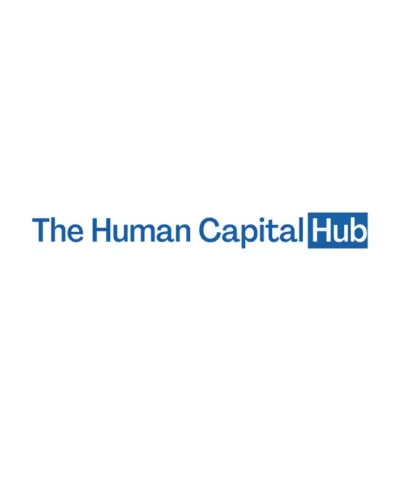Imagine a situation where your team's go-to platform, Slack, effortlessly connects with your HR processes. In fact, research shows HR staff spend up to 57% of their time on repetitive administrative tasks. Nowadays, dealing with countless questions about leave, payroll, or benefits, and chasing approvals through endless emails and spreadsheets can really weigh down HR professionals with mundane tasks.
Why does HR feels busier than ever?
HR departments face excessive manual tasks daily, such as onboarding, performance feedback, vacation requests, shift organization, and attendance tracking. Constant context switching across multiple platforms leads to significant productivity loss, with knowledge workers wasting 12 workdays annually. Consequently, HR professionals report feeling overworked, resulting in slower response times and communication issues within organizations.
This situation can be resolved by implementing Slack to transform HR workflows. HR can engage with staff where they’re already chatting and streamline repetitive requests instead of getting bogged down by admin tasks.
By moving routine requests and approvals to Slack, HR directors can cut down on the time they spend sifting through spreadsheets and emails. This shift will give them more breathing room to focus on nurturing talent, keeping employees happy, and fostering a positive workplace culture.
The rise of Slack-centric workflows
Bringing HR tools into Slack has become a go-to strategy for many organizations. The concept is straightforward: integrate HR functions directly into Slack using smart apps and workflows. This allows employees to submit requests, receive notifications, and get approvals all within the same chat platform they use daily. The benefits are significant:
Less tool-switching. Everything happens in one spot, which means less time wasted. According to Slack’s own research, 75% of knowledge workers prefer a single integrated platform rather than juggling multiple tools.
Faster responses. With automated reminders and in-app notifications, leave requests or policy updates won’t fall through the cracks. HR questions can be addressed right away, eliminating the need for lengthy email exchanges.
Higher engagement. When updates, feedback, and approvals are shared in channels, everyone stays informed. This visibility fosters trust and alignment. Slack reports that 84% of respondents believe technology simplifies internal communication, while 83% say it enhances collaboration.
Slack-centric HR apps can tackle a variety of tasks. Imagine if workers can instantly check their balance and request PTO with just a quick slash command. Managers get to approve time-off requests on the spot since they receive alerts right in Slack. You can even use quick polls or forms to handle standup reports, shift schedules, and daily attendance check-ins. New hires automatically get welcome messages in their Slack and can tick off their onboarding checklists. Plus, you can set up Slack notifications for regular reminders, like policy updates or performance review deadlines. In a nutshell, using Slack for your workflow cuts down on all that back-and-forth that usually happens over email and other tools by bringing approvals, reminders, and updates all into one place.)
What is slowing down HR teams the most
Before these integrations came along, HR teams often found themselves bogged down by some classic time-wasters:
Manual approvals and notifications. Managers send out requests for signatures via email, and staff have to remember to CC HR on every little update. This leads to a mountain of follow-ups.
Onboarding paperwork. New hires have to fill out forms, acknowledge policies, enroll in benefits, and get IDs, all done either by hand or through cumbersome systems.
Leave requests and tracking. Teams often end up copying dates into spreadsheets or emailing each absence request. Keeping track of accruals and coverage can easily lead to mistakes.
Attendance and time-off data in Excel. Many still rely on spreadsheets to calculate hours and shifts. It’s all too easy for data to become outdated or even lost.
These inefficiencies come with real costs. While HR is stuck in administrative tasks, important initiatives get put on hold, and employee questions remain unanswered. For instance, 47% of HR professionals say that switching between applications is a major productivity killer. The time spent chasing approvals or searching for data really adds up: one study found that HR teams spend nearly four weeks a year on manual tasks. Each manual form also carries hidden costs - averaging about $4.78 per data entry. There is a human cost in addition to the financial one: slow hiring procedures, missed birthdays or anniversaries, and delayed responses can all significantly lower satisfaction and morale. In other words, the entire company suffers when HR is hampered by cumbersome procedures.
Document processing represents one of the most time-consuming aspects of these procedures. Employment contracts, tax forms, benefits paperwork, and compliance documents all require data extraction and verification. Now AI document processing automates this process by intelligently parsing documents and extracting key information into structured formats. This eliminates hours of manual data entry while reducing errors that occur when HR staff manually transcribe information from forms and applications. Automation platforms like Zapier handle workflow routing while Extend AI tackles the document intelligence layer, allowing HR teams to build end-to-end processes where documents are automatically parsed, validated, and routed to the right systems
Example: Simplifying HR through automation
The one bright example is BuddiesHR - designed to simplify and centralize HR management directly inside Slack. BuddiesHR is a suite of Slack apps built for team culture and people ops. Its modules cover core needs: for example, chatbots that handle leave requests and approvals, collects daily attendance or shift updates, automates birthday and anniversary celebrations, and makes it easy for anyone to send recognition.
Key highlights of BuddiesHR:
Native Slack experience. Native Slack experience. All features work in Slack. Employees submit requests with commands or forms in channels or DMs, and everything happens without leaving Slack . BuddiesHR emphasizes that each module is “100% in Slack” - no separate login or complex HRIS is required.
Leave and attendance tracking. Palmy Vacation lets team members request time off and see balances right in Slack. Stany Standup logs daily check-ins or schedules. Managers get instant Slack notifications to approve or review, streamlining responses.
Custom workflows. HR can create custom Slack-based forms and surveys. For example, send team announcements, pulse survey (Pulsy) questions or feedback forms through Slack.
Analytics and dashboards. Built-in reporting tools give HR insight into trends. For instance, survey results and participation rates are visualized in real time, so you can make data-driven decisions.
Onboarding and documents. With BuddiesHR, new hires can receive welcome messages and tasks via Slack, and key onboarding documents can be shared and signed off in-channel. Everything stays organized in one place.
Quick, DIY setup. BuddiesHR is built for small to mid-size teams. The signup process is fast - literally a few minutes to install and configure. There’s no lengthy demo or heavy IT roll-out. HR teams can self-serve, so help is up and running almost immediately.
As one HR leader puts it, using Slack apps “saves a lot of time and admin”. BuddiesHR exemplifies "Slackifying" your people operations by managing routine requests within Slack. It automates engagement activities, reminders, and approvals so your team can concentrate on what truly matters.
The broader shift toward smarter workflows
BuddiesHR is part of a bigger shift in HR: automation and integration are now essential, not optional. Organizations that connect their tools see faster hiring, fewer errors, and better employee experiences. Clear communication matters too. When HR needs to explain compensation formulas, PTO accrual rates, or benefits calculations, math writing software ensures these mathematical expressions display correctly in employee handbooks and policy documents, reducing confusion about how pay and benefits are calculated. Companies investing in HR tech report higher satisfaction and retention, automating onboarding, benefits, and payroll makes a measurable difference. As Slack's research shows, a great employee experience "dramatically improves your company's ability to attract, retain, and engage employees."
This changes HR's role. Instead of drowning in admin work, HR teams become strategic partners, driving innovation, growth, and culture. With connected tools, they can focus on developing talent and improving the workplace.
The future is clear: Employees expect seamless tech experiences. HR needs to deliver by automating repetitive tasks and creating experiences as smooth as their favorite consumer apps.
Conclusion
The goal of Slack HR transformation is to enhance human interaction rather than diminish it. Teams can recover valuable time for strategic thinking, coaching, and empathy by freeing HR from the tediousness of manual forms and never-ending follow-ups. HR can change their focus from paperwork to people with the help of the appropriate Slack integrations (such as BuddiesHR and others). "Making work simpler, more productive, and more pleasant releases the energy that people want to bring to work," according to one Slack resource.
In practice, this means prioritizing culture, retention programs, and learning opportunities, the initiatives that truly make a difference. So, go ahead and Slackify your HR workflows. Automate those routine approvals and reminders, keep everything in one chat platform, and watch your people team regain the hours they need to nurture your company’s most valuable asset: it’s people.



